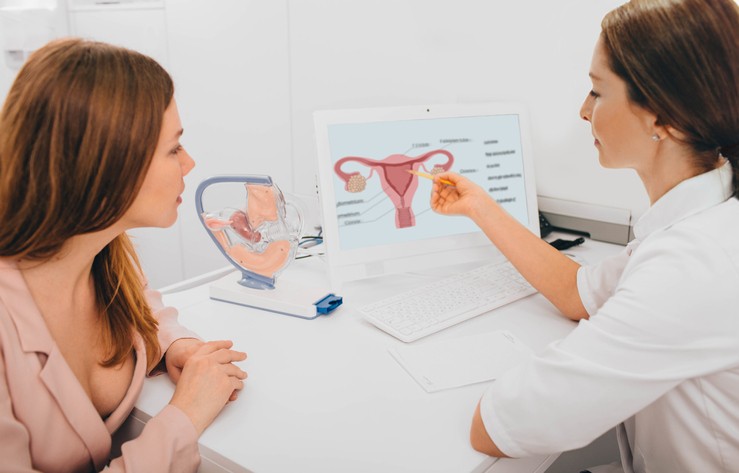Strength Training: Why it is Important for Moms
NOV 05, 2025Progressive overload means consistently challenging your muscles to do a little bit more than they're used to.
Read More
If your monthly period becomes unmanageable – requiring pads, tampons and frequent bathroom breaks -- don’t suffer in silence. Heavy, prolonged periods can be a sign of fibroids, the most common type of pelvic tumors in women. These muscular tumors are very rarely cancerous, but often have uncomfortable symptoms.
An estimated 20 to 80 percent of women develop fibroids by age 50. You can have one or many fibroids and their size can range from a tiny apple seed to a sizeable grapefruit. They can grow in several locations – inside the uterine cavity, within the wall of the uterus and outside the uterus. It’s less common, but fibroids can also develop in the cervix, which is the lower part of the uterus.
Several factors can influence your risk of developing fibroids. If your mother had it, your risk is about three times higher than average. Risk is two to three times greater in African American women, who tend to develop symptoms earlier. Starting your period at an early age (9 to 11.5) also increases your risk. Contraceptive use has not been found to affect fibroid risk. Having babies decreases risk of fibroid formation.
What causes fibroids in some women but not others is unknown. However, genetics are thought to play a role. We do know that estrogen influences fibroid development as they tend to grow during pregnancy and recede at menopause.
Diagnosis starts with a physical exam. Fibroids are often found during a routine pelvic exam. Your health care provider may perform an ultrasound of the uterus, sonography (diagnostic ultrasound) and/or hysteroscopy (scope from inside of the uterus). Once diagnosed, women have several treatment options, from medications to surgical procedures.
My message for women: don’t suffer with annoying or painful symptoms. See your health care provider for a thorough diagnosis and to learn your treatment options.
To learn more about treatment options for fibroids, please visit CHI Health Women's Health.

Progressive overload means consistently challenging your muscles to do a little bit more than they're used to.
Read More
A Nurse Practitioner answers your essential mammogram questions. Understand timing, prep, the procedure, callbacks, and financial options.
Read More
Radiotherapy is a finely tuned, powerful partner that can work with your surgery to give you the best possible outcome for breast cancer.
Read MoreWhen you need local health information from a trusted source, turn to the CHI Health Better You eNewsletter.